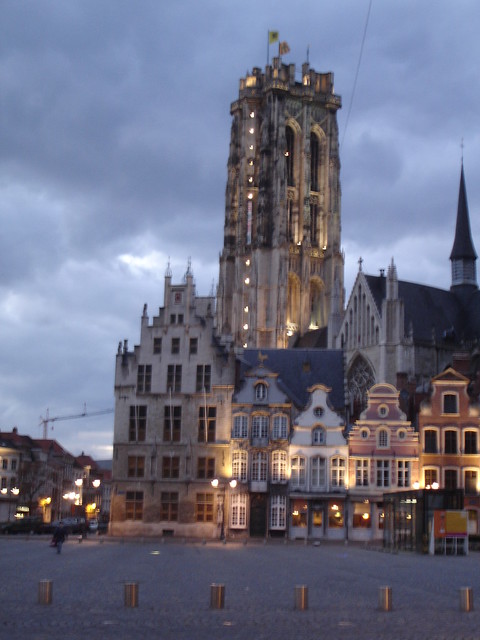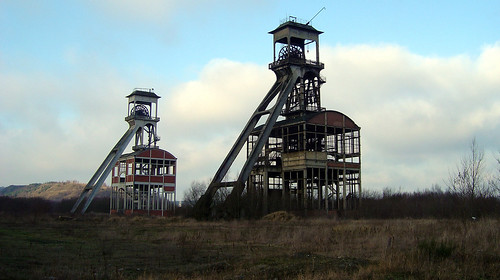The Wonders of Belgium Posted by Karoly Molina on Mar 23, 2016 in News
In the wake of the terrible attacks in Brussels, I would like to dedicate this post to Belgium.
There are many ties between the Netherlands and Belgium. Belgium is not only the southern neighbor of the Netherlands, but was also part of the Netherlands until the Belgian revolution which lasted from 1830 to 1839. Living in the Netherlands, particularly in close proximity to Belgium like I do, makes Belgium very much part of every day life. Because of this, here is a list of 5 awesome things about Belgium!
1. Frites
Although in the U.S. we tend to call fries “French fries,” these are really from Belgium. When walking around in Belgium, particularly when touring around, grabbing a cone of frites covered in fritessaus is heavenly.
2. Dank u
As opposed to the Netherlands where the use of “u” isn’t used as often, in Belgium it is quite common. When you go to a restaurant, the waiter will always speak to you using the formal u. This is the same for people you interact with that are not close friends.
3. Bloementapijt
Every other summer, more than 600,000 flowers are arranged in a pattern to imitate a Turkish rug at the Grote Markt. The carpet is only on display for 4 days. This year, the carpet will be ready on August 12 to the 15th. For more information, check the event’s website.
4. Mechelen
I must say that Mechelen turned out to be a wonderful surprise when I visited last year. The city is beautiful, clean and full of charm. St. Rumbold’s Cathedral is absolutely breathtaking, and the view from the tower make it well worth the climb. From the top, you can see Antwerp, Brussels and even the Atomium (which is another wonderful sight to see!). While there are many beautiful cities in Belgium (Brugge, Brussels, Antwerp, etc.), Mechelen is a little less known but worth the visit!
5. Diversity
Belgium is a very diverse country. Both French and Dutch are spoken by the Walloons and the Flemish, respectively. There is also a region where German is spoken. This might not seem practical, but for Belgium it seems to work. In addition to the languages, there are other ways in which Belgium is very diverse. There is a big Jewish community in Belgium, particularly in Antwerp. Also, the mines in Belgium allowed for many migrants from Italy, Greece and Turkey to move to Belgium to work. Maasmechelen, the city where my father-in-law’sl family lives, is one of the many cities full of diversity. This means that the market on Saturdays carries a wide variety of products, Greek, Italian and Turkish restaurants are authentic and many languages can be heard and learned.
What would you add to this list?

Build vocabulary, practice pronunciation, and more with Transparent Language Online. Available anytime, anywhere, on any device.
About the Author: Karoly Molina
Since I was a little girl, I was fascinated with languages and writing. I speak English, Spanish, Italian, Dutch and a little bit of French. I am a writer, reader, language teacher, traveler, and a food lover! I now live in The Netherlands with my husband Riccardo, our cat Mona, and our dog Lisa, and the experience has been phenomenal. The Dutch culture is an exciting sometimes topsy-turvy world that I am happily exploring!








Comments:
Carla Henrichsen:
Thank you, well done and timely.
Emilee:
Belgian waffles!
Also you should make note that at least on the Flemish side, the Belgians are very open and friendly.
G127:
Excellent post: one slight nitpick on the fries (since it’s a blog about language anyway)
In the Netherlands the Belgium fries are considered different (slightly ticker, made with a knife directly from a certain type of potatoe): (we call them “vlaamse frieten”) The’normal french fries’ that you get at places like mc-Donalds are called ‘friet’ in the south and ‘patat’ in the north. (if people want to distinguish between the different types of fries they do sometimes call the regular kind ‘franse frietjes’, just like in the US.
Karoly G Molina:
@G127 Thank you for that observation. I can’t say that I’ve heard people say “vlaamse frieten” or “patat.” I will keep my ear out for it because I might have missed this little detail. Thank you 🙂